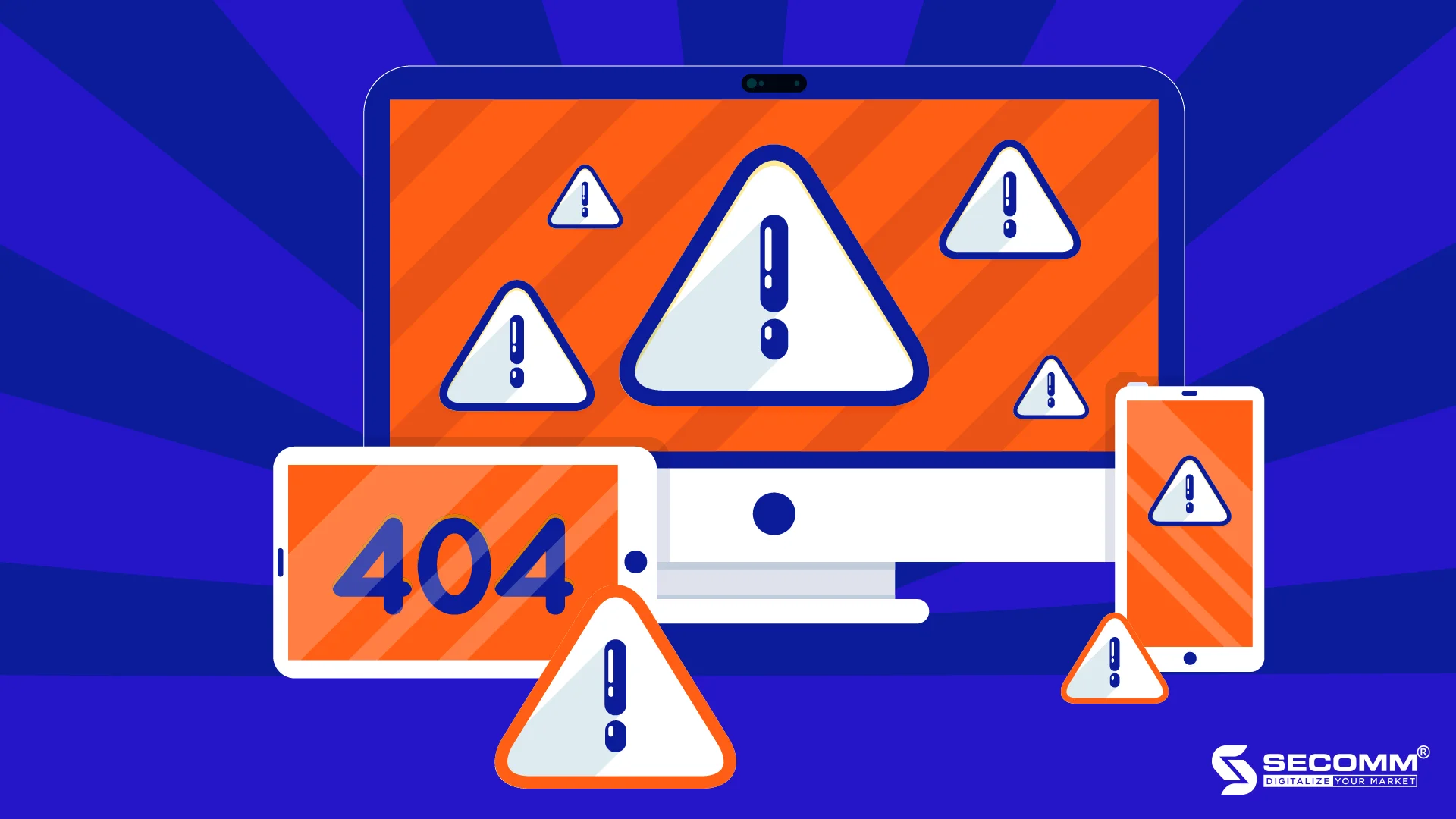A website is a powerful tool for supporting ecommerce (Electronic Commerce) business, serving as a bridge between businesses and customers in the online shopping market, facilitating the entire process of buying and selling goods, and boosting sales. Therefore, building an ecommerce website is crucial for the ecommerce business of a company, requiring not only serious investment but also a long-term strategy.
However, there are still many ecommerce websites facing certain issues that need to be addressed promptly! Here are some common problems:
1. Low Page Load Speed
To evaluate the speed of a website, tools like Google PageSpeed Insights, WebPageTest, Pingdom Speed Test, Uptrends, etc., can be used.
Scores range from 0 to 100, where 0-49 indicates relatively low speed, 50-89 indicates average speed that needs improvement, and 90-100 indicates excellent speed.
Slow page load speed affects user experience, conversion rates, customer retention, and SEO ranking.
Causes:
- Large product catalogues and diverse products with various attributes.
- Numerous high-resolution images.
- Increasing data in customer information, marketing, content, product catalogue, sales, and operations.
- Hosting quality and configuration issues.
Solutions:
- Compress or resize images, choose efficient image formats (e.g., jpg or .webp instead of .png).
- Utilize browser caching to reduce data load time, optimize the database by minimizing CSS, JavaScript, and HTML, and use tools like CDN/cache to reduce the time to retrieve large amounts of access data.
- Choose hosting providers with suitable caching memory, and web server configurations (Apache/Nginx/PHP/MySQL…), and use CDN to save bandwidth.
2. Unprofessional Ecommerce Website Interface
Issues with graphic design, colour schemes, inconsistent images and fonts, lack of brand representation, and non-optimal website structure affect the professionalism of the interface.
Consequences:
- Unattractive and unimpressive website interface.
- Reduced professionalism in the eyes of customers leading to decreased customer return rates.
- Decreased user experience, ineffective product search, suggestions, and quick purchase.
Causes:
- Insufficient research on consumer behaviour during the website structure design.
- Lack of expertise in evaluating the aesthetic appeal of the ecommerce website.
Solution:
- Use tools like Google Consumer Surveys, Facebook Audience Insight, and Prisync for market research, customer research, and competitor price tracking.
- Explore design trends such as Dark Mode, Gradient, 3D, and Lai Landing pages.
- Collaborate with experienced interface design providers for an attractive and brand-aligned ecommerce website interface.
3. Suboptimal Product Categories
Poorly structured product categories and incomplete product information negatively impact the user experience.
Issues:
- Lack of detailed and organized product categories.
- Incomplete product information related to attributes, images, videos, inventory, pricing, promotions, etc.
Consequences:
- Difficulty for customers to search for products.
- Inability to suggest relevant products.
- Prolonged decision-making time for customers, affecting sales.
Solutions:
- Establish a layered category structure, apply filtering and sorting features, and supplement detailed information for each product.
- Implement SEO campaigns for the ecommerce website, including keyword research, category content planning, proper robots.txt configuration, optimized website structure, and URL optimization for category pages.
4. Lack of Features to Enhance the Shopping Process
Websites should support customer search, and provide convenient and quick shopping processes.
Issues:
- Lack of effective features for searching and suggesting suitable products.
- Inefficient processes in cart addition, checkout, and payment.
Consequences:
- Incomplete shopping experience for customers.
- Slow and complicated purchasing processes lead to reduced conversion rates and revenue.
Causes:
- Absence of a strategic plan for deploying features according to customer buying behaviour.
- Suboptimal implementation by developers.
Solutions:
- Develop a comprehensive strategy with costs and timelines for integrating features into the business model.
- Collaborate with experienced solution providers to ensure successful integration.
5. Lack of Synchronization with Other Business Systems
Failure to link sales channels (social media, ecommerce platforms, ecommerce websites) with internal business systems like CRM, and ERP for synchronization can lead to misinformation and management difficulties.
Issues:
- Inconsistent information across sales channels.
- Challenges in managing customer, product, order, and store data.
Consequences:
- Impacted online sales due to uncontrolled product/service data.
- Lack of centralized data for reporting, analysis, business forecasting, and customer care activities.
Causes:
- More critical issues in the current ecommerce website system.
- Lack of a suitable strategy regarding costs and time for implementation.
Solution:
- Devise a plan including costs, timelines, and testing methods for the integration of data synchronization functionality into the ecommerce website system.
- Seek solution providers with experience, industry knowledge, and comprehensive services from consultation to development, maintenance, and optimization.







 2
2
 4,399
4,399
 0
0
 1
1